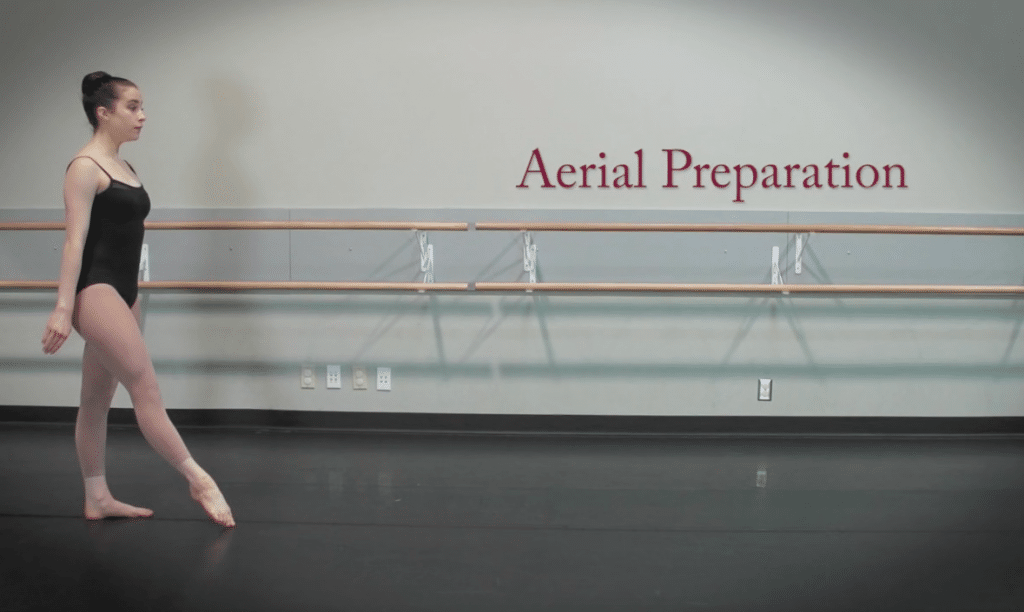Ask any student: what is the number one trick you want to learn? The answer is always the same – an Aerial!
The Aerial is one of the most challenging Acro tricks to learn, despite the fact that it is actually NOT one of the most difficult tricks to execute once mastered.
Most students require at least one to two years to learn it but once they get it, it feels very simple and is one of the more versatile tricks to use in choreography.
A Side Aerial should be taught from a step, retiré lunge preparation, with the chest up on the take-off, and a strong drive back with the arms (arms are reaching straight up and vertical in the upside-down position); it ends in a strong square lunge of the first leg (the absorbing leg), with a stretched and strong landing of the second leg (the braking leg), with the upper body finished open to the audience and the arms in Acro 4th Position. (More on this ending position later)!
I spent 20 years of my career analyzing Aerials, and studied several different methodologies and approaches during trying to figure out the best way to teach Aerials (I personally taught and was taught several INCORRECT and INEFFICIENT ways to do an Aerial – yikes!).
After teaching over 1000 different students, and having tried EVERY method to teach and execute an Aerial, I cracked the code and created the following ADTA 4-step system to teaching this highly sought-after trick – and it WORKS!
Check out the Aerial Preparation – 4-Step System here:

As a bonus, this four-step method utilizes the same technique that is used to achieve a Front Aerial, making the transition from mastering a Side Aerial to learning a Front Aerial seamless – two tricks for the price of one!
If you take the one to two years necessary to perfect the technique in each step, your students will be able to perform stunning, high Aerials that “pop” off of the ground beautifully and SAFELY.
This four-step method also greatly reduces the amount of spotting required for each student, and students that take the time to learn this proper Aerial technique will have their Aerials for LIFE.
Check out the ADTA method for spotting here:

Why You Should NOT Teach Aerials from a Running Preparation:
Students that learn Aerials from a running preparation come to depend on momentum to take off, instead of learning to push from the hip joint. When a student learns how to push out of his or her hip joint, he/she is able to “pop” off the floor easily, enabling him or her to dance into and out of the Aerial flawlessly, without the use of an obvious preparation.
Why Aerials Should Finish in a Strong Lunge:
At the ADTA, we emphasize the need for aerials to finish in strong square lunge of the first leg (the absorbing leg), with a stretched and strong landing of the second leg (the braking leg), with the upper body finished open to the audience and the arms in Acro 4th position. This is to get your students used to a one-footed landing. The second leg is merely a brake, and there should be a brief pause between the landing of the first and second foot on the floor.
When students are used to landing on one foot (instead of immediately shifting weight onto the second foot), their second foot is still “free” and available for creative transitions, such as a turn, leg extension, or even another aerial!
Get the complete ADTA Aerials SYSTEM inside the “Premiere Comprehensive Program For Acro Dance” – click here for more information


